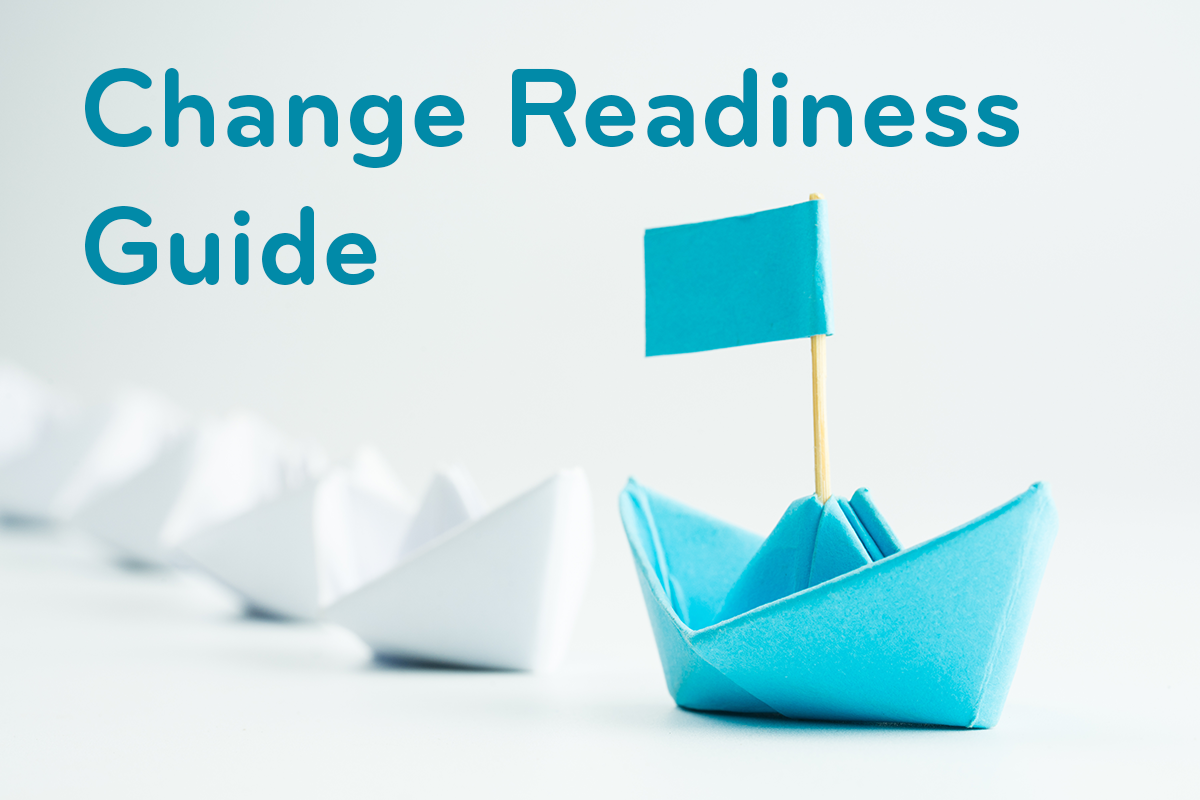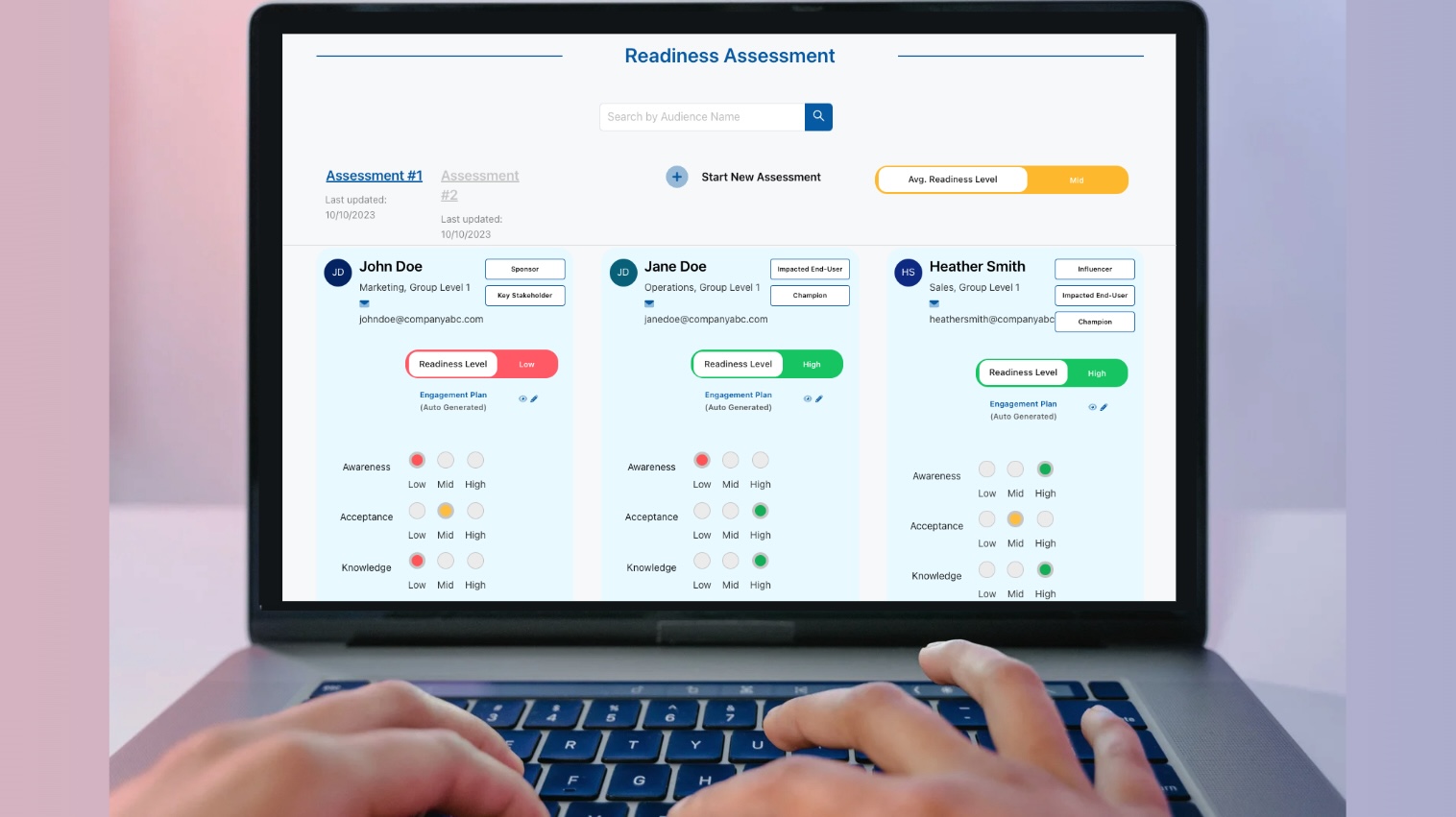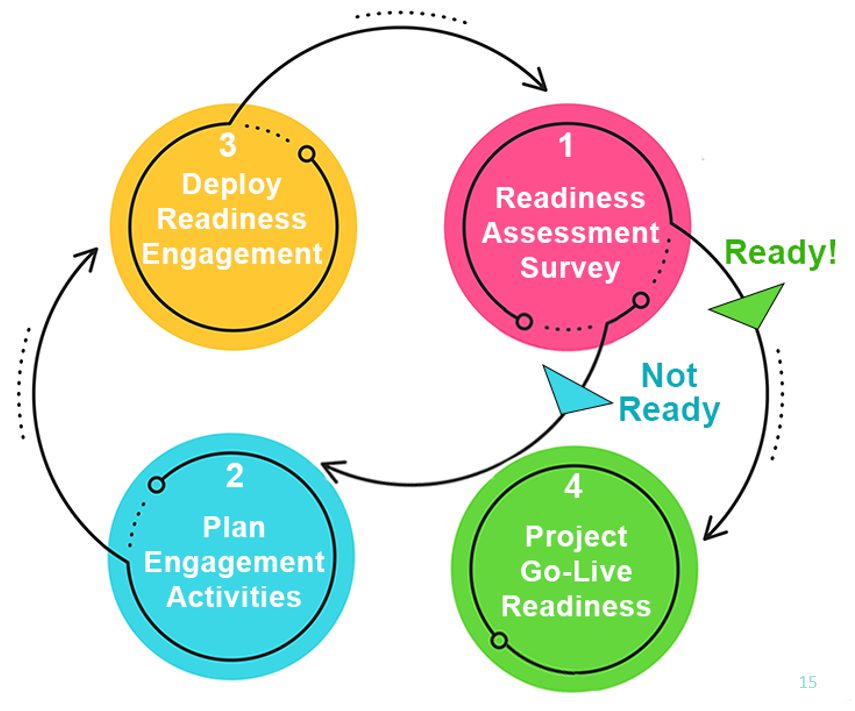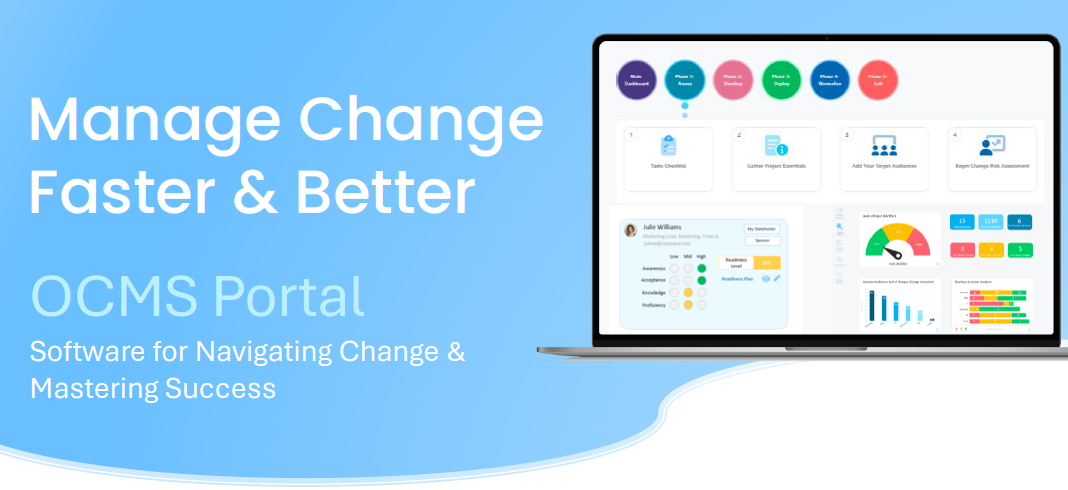Change Readiness Assessment Made Easy: Step-by-Step Guide
This organizational change readiness guide simplifies the process of conducting a change readiness assessment. Whether you’re a change management professional, a project manager, or a leader tasked with driving transformation, our step-by-step approach will equip you with the knowledge and tools to assess readiness effectively.
Companies are constantly facing the need to adopt new technologies, restructure their operations, or shift their strategic focus. However, the effectiveness of these changes largely depends on one key factor: the organization’s readiness to embrace them. This is where a Change Readiness Assessment as part of change management becomes invaluable.

A Change or Business Readiness Assessment is a structured approach to evaluate how prepared an organization and its employees are to embrace and implement a change initiative. It identifies potential barriers, gauges employee sentiment, and highlights areas needing support. By assessing change readiness, organizations can tailor their change management strategies to address specific challenges and leverage existing strengths.
Watch a summary below:
Story Highlights
|
Why Assess Change Readiness? Paving the Way for Success
Change initiatives are often met with a mix of emotions – excitement, apprehension, and sometimes, outright resistance. Assessing change readiness helps you gauge your organization’s overall receptivity to the proposed change.
Here’s why a change management readiness assessment is a valuable tool:
- Identify Potential Roadblocks: By understanding areas of low readiness, you can proactively address concerns, manage resistance, and build support for the change.
- Tailor Your Change Management Strategy: The organization assessment results can inform your overall change management strategy. You can prioritize communication efforts, develop targeted training programs, and address specific anxieties to ensure a smooth transition.
- Increase the Likelihood of Success: Change initiatives with high change readiness are more likely to be successful and achieve their desired outcomes.
By proactively assessing organizational readiness for change, you can set your organization up for a smoother transition and maximize the potential benefits of change.
The Four Pillars of Change Readiness
Organization readiness for change isn’t a one-dimensional concept. It encompasses four key indicators that paint a holistic picture of your organization’s ability to embrace change.
1. Awareness: Do your employees understand the need for the change? Is there a clear understanding of the rationale behind the initiative and the potential benefits it holds for the organization?
2. Acceptance: Is there a general sense of acceptance amongst employees regarding the need for change? While some resistance is natural, a strong foundation of acceptance is essential for successful implementation.
3. Knowledge: Do employees have the knowledge and skills required to navigate the change effectively? A well-informed workforce is better equipped to adapt to new workflows, processes, or technologies.
4. Proficiency: Once equipped with knowledge, can employees apply these skills in a practical setting? Does the organization have the necessary resources and training programs to ensure employees can confidently navigate the change?
By evaluating these four key factors using a change readiness assessment template, you can identify areas of strength and weakness in your organization’s change readiness.
Good change readiness assessment tools, like OCMS Portal, can take employee scores for each of these metrics and calculate them into an overall stakeholder risk score.
OCMS Portal’s Change Readiness Assessment Tool
Do you have any questions about organizational readiness assessment, readiness to change, creating a business readiness plan, or about our popular change readiness assessment tools? Please reach out and let us know!
Tools and Techniques for Change Management Readiness Assessment
There are various tools and techniques you can utilize to conduct an organizational change readiness assessment. Here are a few effective options:
- Change Readiness Surveys: Develop or utilize pre-designed change readiness assessment questionnaires to gauge employee awareness, acceptance, and perceived impact of the change.
- Focus Groups and Interviews: Facilitate in-depth discussions with representative groups of employees to gather qualitative data on their perspectives and concerns.
- Change Readiness Assessment Tools: An online change readiness assessment tool (like OCMS Portal) can streamline the assessment process, providing structured change readiness surveys and data analysis functionalities.
- Performance Data Analysis: Reviewing historical data on employee performance and adoption of past changes can provide insights into the organization’s overall change agility.
By combining quantitative and qualitative data from these change readiness assessment tools, you can build a comprehensive picture of your organization’s change readiness.
Please let us know if you have any questions or feedback about using a change readiness assessment questionnaire, readiness of change reporting, assessing change readiness for different groups, or automating a business readiness plan.
How to Turn Low Change Readiness Around
What happens if the results of your change readiness survey show low scores in awareness, acceptance, proficiency, and/or proficiency (meaning low readiness to change)? Here are some tips on the steps to take to address these individual components of organizational change readiness:
If Awareness is Low, Boost Awareness & Transparency
If employees aren’t aware of the change, address it head-on with clear, transparent communication. Explain the “why” behind the change, its benefits, and how it impacts them. Use multiple channels to reach all employees, like town halls, targeted emails, and department-specific messaging.
If Acceptance is Low, Address Concerns & Build Buy-In
When acceptance of the change is low, foster open communication to understand the reasons behind the resistance. Here’s how:
- Conduct surveys or focus groups to gather employee feedback.
- Hold open forums where employees can ask questions and voice concerns.
- Encourage open communication with managers, allowing employees to express doubts freely.
If Knowledge is Low, Bridge the Knowledge Gap
If knowledge of the change is lacking, prioritize filling that gap through targeted training and resources:
- Tailored Training: Develop training programs specific to different roles and learning styles (workshops, online modules, one-on-one coaching).
- Accessible Resources: Offer a variety of resources for easy access to information (user guides, FAQs, explainer videos).
- Knowledge Sharing: Encourage peer-to-peer learning through internal communities, “change champions,” and knowledge-sharing rewards.
If Proficiency is Low, Improve it Through Practice
Low proficiency in a business readiness assessment indicates a lack of hands-on experience. Address it with these strategies:
- Hands-on Learning: Provide opportunities to practice (simulations, pilot programs, mentorship programs).
- Structured Practice: Design safe spaces for employees to experiment (dedicated practice sessions, sandbox environments, gamification).
- Ongoing Support: Offer ongoing support throughout the transition (help desks, FAQs, dedicated support personnel).
When Is It Best to Conduct a Change Readiness Assessment?
So, when exactly should you conduct an organizational change readiness assessment? Change practitioners usually conduct more than one business readiness assessment. It’s important to get a baseline reading on change readiness at the beginning of a change initiative. This gives you a starting point.
That starting point helps you understand how much work will need to be done to prepare groups and individuals within the organization for successful adoption of the changes.
How do you see the impact of your efforts? You do another organizational readiness assessment, which will hopefully show more people ready. This process is illustrated in the following Change Readiness Cycle graphic (part of the OCMS Change Management Framework).
So, when is it best to conduct a change readiness assessments? Here are some key situations:
At the Onset of Change Initiatives
Before embarking on a major change initiative, assessing organizational readiness for change helps identify potential roadblocks and tailor your approach accordingly. Assessing change readiness at the onset also gives the change management team important insights that help them plan communications, training, and other OCM engagement activities.
A Few Weeks Prior to Go-Live
Use a change readiness assessment template to assess change readiness a few weeks prior to the project going live. This allows you to gauge the success of your change management activities, while still having time to add additional training, workshops, and communication if needed based on organizational readiness to change scores.
Periodically During the Project
Regularly assessing change readiness is especially important during long-term projects. Add change management readiness assessment check-ins at strategic dates throughout the project. These will help you stay ahead of any unexpected roadblocks and identify areas for improvement, promoting a successful project adoption.
By strategically integrating organizational readiness assessments into your change management process, you can ensure that your organization is well-equipped to navigate change effectively.
Do you have questions about using a change readiness assessment template or when is it best to conduct a change readiness assessment? Please reach out and let us know. We’ll love to hear from you.
Don’t Miss: Best Enterprise Change Readiness Assessment Tool
Conclusion: Transforming with Confidence
Change doesn’t have to be disruptive. By assessing your organization’s change readiness and proactively addressing potential obstacles, you can pave the way for a smooth and successful transition. Remember, successful change management hinges not just on the initiative itself, but also on the organization’s capacity to adapt and embrace it.
Here are some final takeaways:
- Change Readiness is an Ongoing Process: Don’t view the readiness of change assessment as a one-time event. Regularly evaluating readiness fosters a culture of continuous learning and adaptability.
- Communication is Key: Transparency and open communication throughout the assessment process and beyond builds trust and encourages employee buy-in.
- Invest in Building Change Capability: Develop a culture that embraces change by providing ongoing training and development opportunities to equip employees with the skills and mindsets needed to navigate change effectively.
By prioritizing organizational change readiness, you can transform your organization into a more agile and adaptable entity that thrives in an ever-changing landscape.
Best Change Readiness Assessment Template
Assessing change readiness throughout a project can be a time-consuming task. But not if you use the right tools!
OCMS Portal is an end-to-end change management platform with a change readiness assessment template designed to score as many assessments as needed for your project. Send out change readiness survey from the platform and the survey answers populate and score the assessment for you. Even creating a readiness engagement plan, automatically!
Are you ready to reduce the time it takes to assess change readiness by approximately 50% or more?
Sign up for a free trial of OCMS Portal today
FAQ: Change Management Readiness Assessment
What is a change readiness assessment?
A change readiness assessment is the process used to assess how ready and prepared a group is for a change. When a business, government, or group goes through change, the impacted audience groups need to be prepared and ready to adopt the new behaviors, systems, tools, etc. required for project success.
How do you assess change readiness?
There are four key indicators used in change management readiness assessment. These are awareness, acceptance, proficiency, and knowledge. The easiest way of assessing change readiness for an audience is to use a change readiness survey.
What is it best to conduct a change readiness assessment?
Some key times to conduct a business readiness assessment are at the onset of the project, a few weeks prior to go live, and for longer projects, periodically at meaningful intervals.
Why is doing organizational readiness assessment important?
You can roll out a new project, such as the implementation of a digital document system, but if people don’t know how to use it, don’t want to use it, or can’t use it for another reason, then the project fails. This is why it's important for the OCM team to assess change readiness, so they can identify the readiness gaps that need to be addressed before the project is deployed.
Is there a good change readiness assessment tool I can use?
Yes. The OCMS Portal change management platform has a simple, yet powerful change readiness assessment template with surveys, reports, automated scoring, and custom engagement plans. Learn more at https://www.ocmsolution.com/enterprise-change-management-software/
Note: Content on OCM Solution's ocmsolution.com website is protected by copyright. Should you have any questions or comments regarding this OCM Solutions page, please reach out to Ogbe Airiodion (Change Management Lead) or the OCM Solutions Team today. OCM Solution was previously known as Airiodion Global Services (AGS).
External sources: stock.adobe.com







